The Customer
The University of Delaware, established in 1743, is an idyllic American college campus, with both historic and modern buildings situated around an expansive lawn known as The Green. With 2300 acres and approximately 10,000,000 square feet, the University of Delaware is a broad and diverse real estate portfolio that presents unique challenges for a Facility Management team.
The Challenge
In August of 2019, the University of Delaware team took on the daunting challenge of modernizing visibility and access to the university’s space utilization and allocation. Dan Yohey was brought on board as the university’s Space Manager responsible for tracking, reporting on, and analyzing the utilization of all 10,000,000 square feet of campus space.
Yohey joined with 20 years of experience in space management across several universities, and he has long embraced technology as a multi-faceted, strategic solution to the complexities of space management in higher education. From understanding faculty disbursement and course allocation to presenting detailed analytics to senior leadership in support of new initiatives, technology is the lens that brings the UDel world into focus.
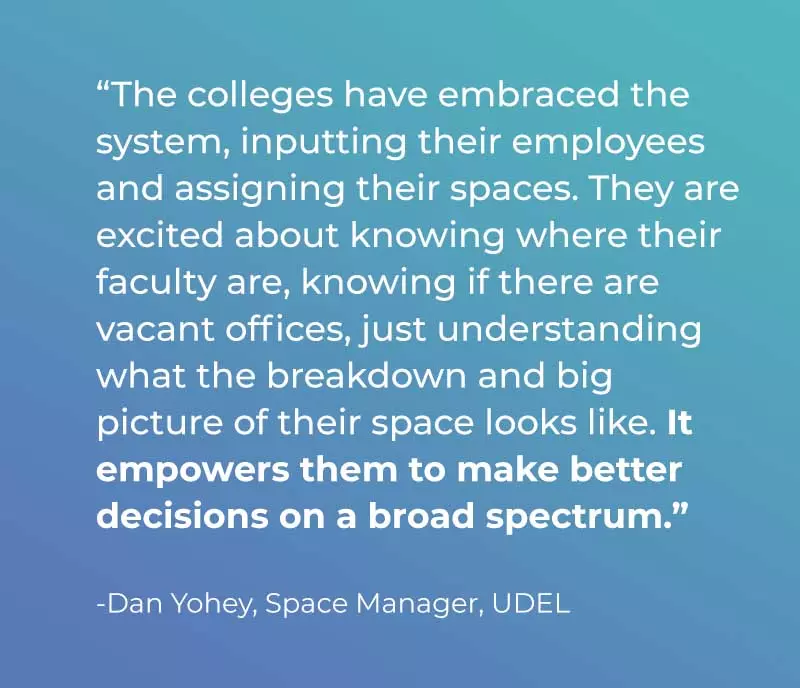
When Yohey arrived at the university in 2019, he made establishing a strong foundation of space data his top priority. “Data is key,” he states. “Objective, empirical data allows for accurate reporting and planning across the university, and it creates transparency across the colleges which is essential for building trust.” The top priority was creating a single source of truth for the UDel space data.
“The Leasing module provided immediate value as the reality of the pandemic set in and the decision was made to have classes online. We currently have 135 buildings that we have temporarily shuttered to conserve costs, to reduce heating, lighting and custodial expenses. Some of those buildings are owned, but others are leased. With FMS:Workplace, we can easily view our current lease portfolio and think strategically about expiration dates and future needs.”
– Dan Yohey, Space Manager, University of Delaware
The Solution
Prior to Yohey’s arrival, UDel had selected the FM:Systems integrated workplace management suite (IWMS) as the system of record. Yohey had worked with FMS:Workplace at another university, and he knew the system scaled well. He could also see the long-term opportunity to add modules over time.
The University had also fortuitously pursued an initiative to get their facility plans up-to-date and in a consistent format. “We were in a very good spot as a starting point for the project. UDel had recently updated plans, and they did a good job. The challenge was to normalize those plans.” Normalizing plans meant reconsidering how those plans could be used in modern technology platforms, creating graphical, interactive displays available to a larger audience.

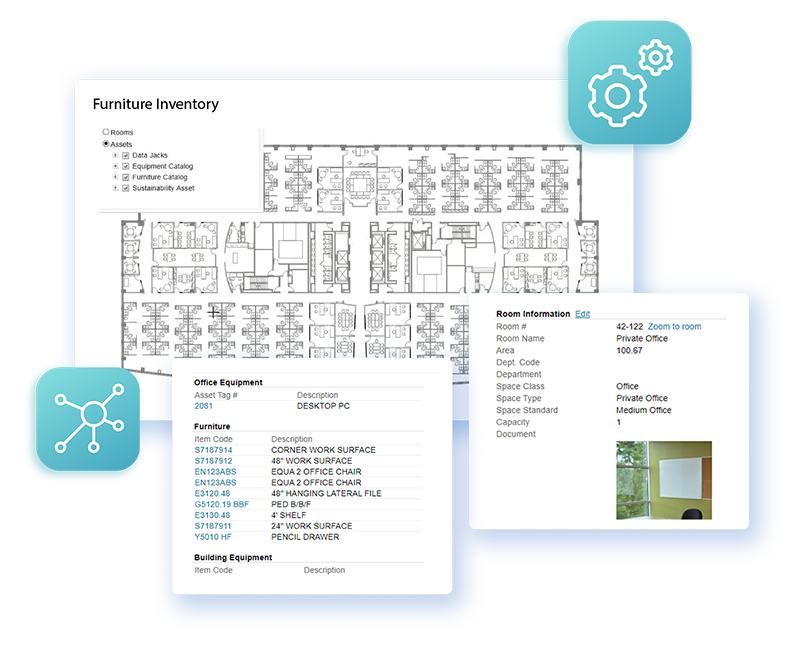
The university’s plans were based on traditional layering conventions, but Yohey took a different angle. Technology creates new opportunities to employ floor plans that don’t require the same level of detail. “We boiled the plans down so they would work well in a graphical view. That became the important consideration – what do I want to display? What picture am I trying to paint?”
They started with the basics, the “who, what, where, and how much questions.” These were the building blocks for a campus-wide system. “We started our implementation in August, we were live by October, and then we started this gathering, this great gathering, of data. FM:Systems gives us one system, a true system of record, that is available in real-time. And it is transparent across the university, which helps us build and sustain trust. As it pertains to space management and facilities in general, our goal is to consistently provide great data.”
The University of Delaware uses these solutions:

Space Management

Asset Management

Higher Education Survey

Real Estate Management

Strategic Planning
The Results
The result is an accessible, intuitive view into space availability and space allocation for colleges, departments and administrators across the UDel campus. The university chose two colleges for the initial deployment, the College of Engineering and the College of Arts and Sciences and received an enthusiastic response from both. “The colleges have embraced the system, inputting their employees and assigning their spaces. They are excited about knowing where their faculty are, knowing if there are vacant offices, just understanding what the breakdown and big picture of their space looks like. It empowers them to make better decisions on a broad spectrum.”
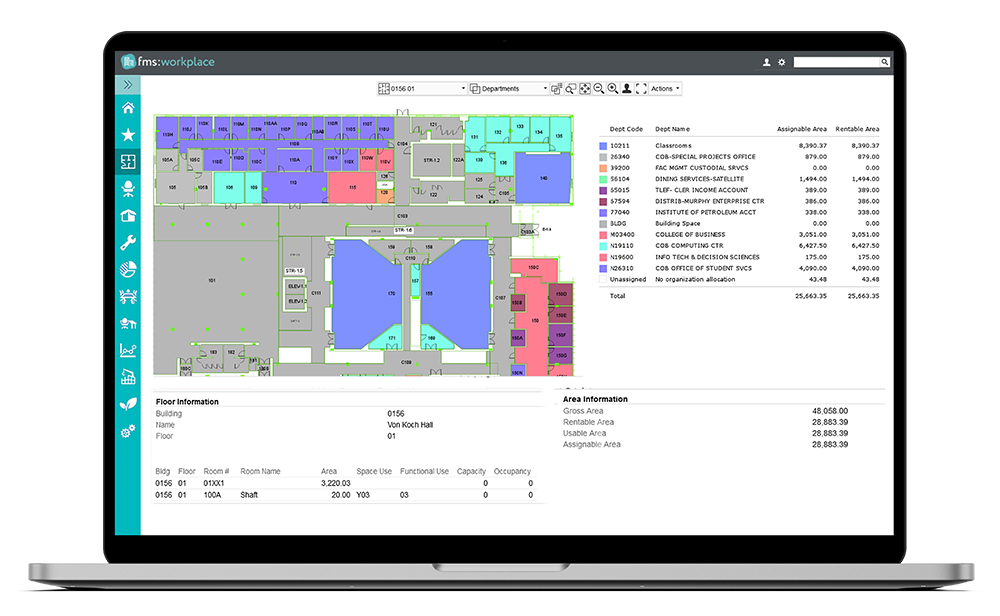
The Ability to Make Informed Real Estate Decisions
FMS:Workplace has also been critical in demonstrating portfolio value to senior leadership: clear data on how space is being utilized and what the real portfolio looks like informs real estate strategies and initiatives, as well as proving out funding requests, research grant allocation and project approvals. System integrations are another key element of the UDel vision as they seek to bring relevant data together from multiple systems including their personnel system, PeopleSoft and their Student Information System, 25Live.
Yohey has sage advice for his counterparts on other campuses looking to launch and manage similar projects: start small. “When taking on an IWMS implementation project, don’t get lost in the details and the possibilities. Start small and build a solid foundation. Pick three or four attributes that are really meaningful to you and capture those. As your space portfolio and the allocation of your space comes into focus, you will see the next areas of opportunity and you can go another layer deep. But if you start too deep, the project will drag and you won’t see the immediate value.”
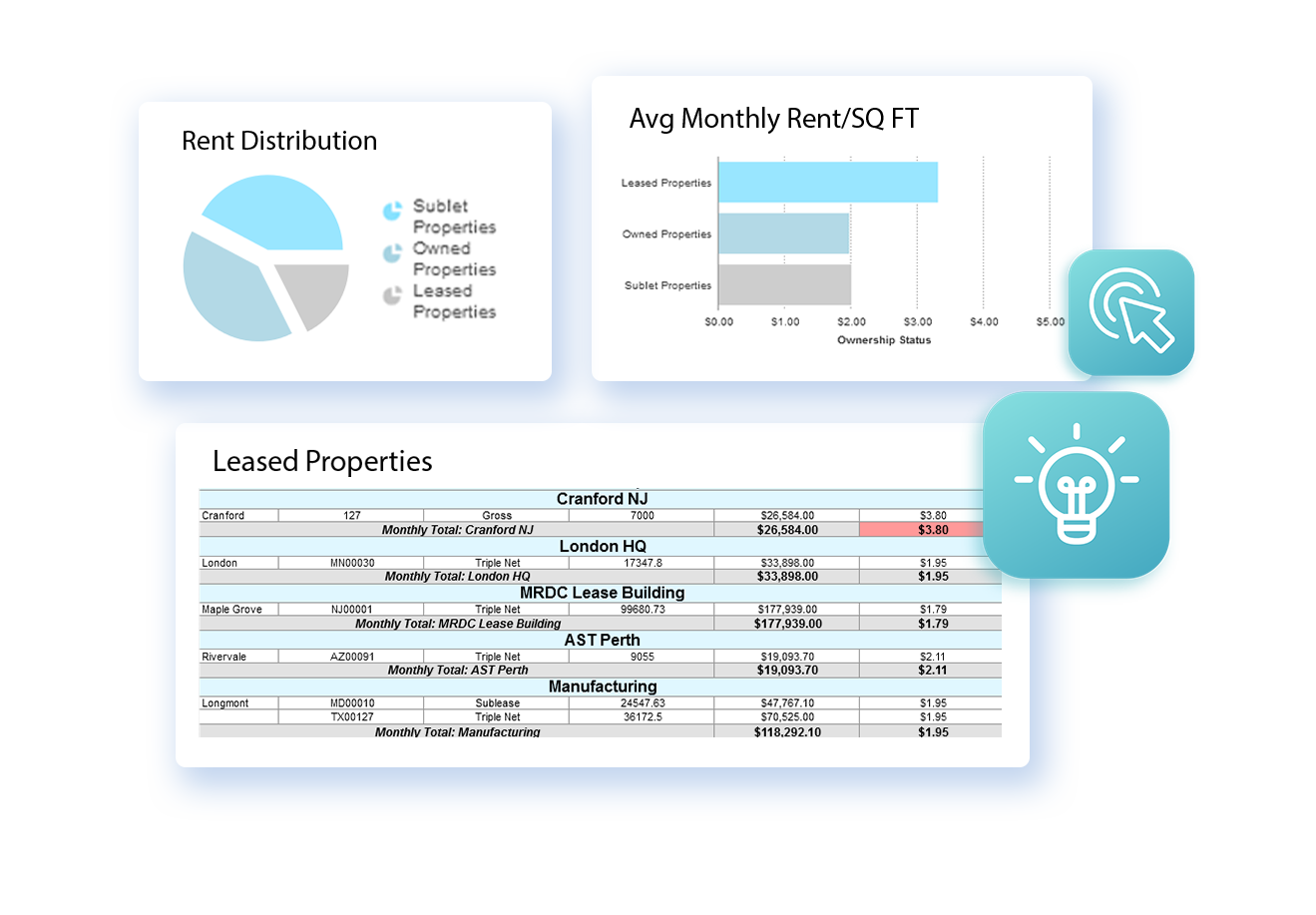
Agility during COVID-19
UDel continues to expand the reach of FMS:Workplace as they systematically roll the solution out to additional colleges and continue collecting data on the far-reaching portfolio. When the COVID-19 pandemic first emerged in 2020, the team was focused on implementing the Real Estate and Leasing module as well as the Higher Ed Survey and Strategic Planning.
“The Leasing module provided immediate value as the reality of the pandemic set in and the decision was made to have classes online. We currently have 135 buildings that we have temporarily shuttered to conserve costs, to reduce heating, lighting and custodial expenses. Some of those buildings are owned, but others are leased. With FMS:Workplace, we can easily view our current lease portfolio and think strategically about expiration dates and future needs.“
Creating Better Student Engagement with Real-time Resource Data
As focused as Yohey has been in his collection and aggregation of data for the UDel physical portfolio, he is keenly aware of the digital space as a critical dimension that carries even more weight in the post-pandemic world. Yohey was already aware that today’s student body is more in tune with technology than any preceding generation, and they have high expectations for mobile apps and quick, intuitive systems available anytime and anywhere. Yohey sees a different type of engagement by this generation of students, where technology serves as the connective tissue between students, in addition to the physical campus.“You have to bring the physical space into the digital realm,” Yohey states. Giving students access to resource availability in real-time is more important than ever for student engagement and recruiting. “Universities are traditionally thought of in terms of brick and mortar, but the digital space is equally important, especially to the next generation of students.”
“We started our implementation in August, we were live by October, and then we started this gathering, this great gathering, of data. FM:Systems gives us one system, a true system of record, that is available in real-time. And it is transparent across the university, which helps us build and sustain trust. As it pertains to space management and facilities in general, our goal is to consistently provide great data.”
– Dan Yohey, Space Manager, University of Delaware
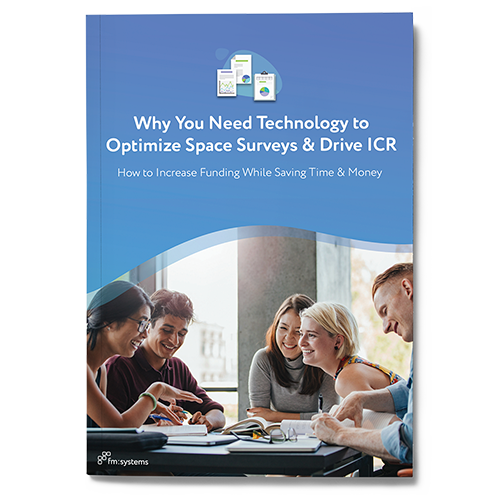
Make your annual space survey process faster, easier and more accurate
Download our guide on how your university space team can simplify reporting, improve ICR rates and gain insights for more informed, strategic decision-making.









